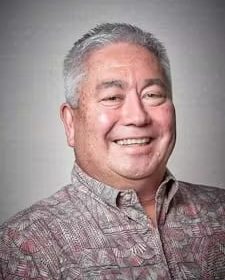All aboard the Hawaii train – no, not that train
Not many on the island of Oahu know about this fully-operating mode of transportation. Tour guides and the Hawaii Visitors and Convention Bureau keep it classified. It’s not part of the big money-generating brotherhood of tourism stakeholders on the island of Oahu.
It connects to the new resort area in the Koolina area, but the Hawaii Tourism Authority never promoted this fun and efficient railroad as a historic and cultural experience for the Aloha State. The non-profit Historic Railroad Society relies on ticket sales and donations to keep this railroad up and running, far away from the billions spent and corruption allegations aimed at the State.
The Hawaiian Railway Society uses the track bed of the defunct Oahu Railway and Land Company.
Enjoy a trip on Sunday that started in pouring rain and ended as a bright sunny day on Oahu’s railroad.
Train Ride on Oahu
The Hawaiian Railway Society works to save Hawaii’s rich railroad history. This educational, non-profit organization was able to get the remaining stretch of track on Oahu (from Ewa to Nanakuli) placed on the State and National Registers of Historic Sites. Today, the Society has restored about 6.5 miles of track and works to restore more. Three vintage diesel locomotives have been restored to operation, and several steam locomotives have been cosmetically restored. The famous Dillingham parlor car has been restored and is available for rides on the second Sunday of each month and also for charter.
Hawaiian Railway, the operating arm of the Hawaiian Railway Society, has the only active, historical railway on Oahu. It offers two regularly-scheduled rides each Sunday. From Monday through Friday, it offers rides to charter groups.
In 1970, two important events took place. First, Waialua Agricultural Co. announced that they planned to scrap their 0-6-2T locomotive No. 6 because rust and deterioration had reduced the engine to an unsightly liability and posed a danger to the local kids who played on her. John Knaus then contacted Bill Paty who was the manager of Waialua Agricultural Co. about saving and restoring the locomotive. John then contacted his boss, Captain Henry Davies, of the Naval Ammunition Depot, Lualualei, about having the locomotive moved there since it had the only locomotive facility left on Oahu. This was followed by a letter to Ed Bernsten of the National Railway Historical Society seeking information on organizing a local chapter. John received approval to have No. 6 restored at Lualualei. He then talked to Nick Carter, another rail fan who had expressed interest in saving the Navy mainline on the leeward coast for an operating railroad.
On August 22, 1970, John Knaus, Nick Carter, Luman Wilcox, and Ken Peale met at Coco’s Restaurant to discuss forming a local chapter of the NRHS. Wilcox was appointed to draw up the temporary by-laws. On August 27, an organizational meeting was held at Coco’s with 15 people in attendance. Wilcox entertained a motion to organize forming a local chapter of the NRHS. Dr. Bob Kemble seconded, and the motion was carried. Thirteen of the fifteen people present signed up. Nominated and elected were: Luman Wilcox for Presiddent, Ken Peale for VP, Nick Carter for Secretary-Treasurer, and John Knaus for National Director. On October 9, 1970, the membership met to approve the By-Laws, and Charter Night was set for November 13 at Bishop Museum.
On February 17, 1971, a Waialua Agricultural Co. trailer was used to transport WA Co. 6 to Lualualei. Waialua Elementary School students gave the old locomotive a send off before it left Waialua. No. 6 was a magnet that brought a group of talent to Lualualei shortly after. A boiler maker named Dave Griner, a welder named Dick Marshall, and a machinist named Bob Haney were all joined by others who wanted to lend a hand. On October 13, the Hawaii Chapter of the National Railway Historical Society was granted a charter.
On October 13, 1970, the State of Hawaii, Department of Regulatory Agencies, granted the Hawaii Chapter of the National Railway Historical Society, Inc., a charter of incorporation.
Now the use of Hawaii Chapter, NRHS, posed a problem as the name was too long, and it really didn’t say anything about local railroading. So at a membership meeting on December 19, 1973, the members voted to use the name Hawaiian Railway Society without severing itself from the NRHS.
One more significant date: On November 25, 1972, Saturday, a dedication ceremony marked the restoration of No. 6. On hand were local dignitaries to celebrate the event. After 84 Sundays of restoration work, a dream came true.
In the meantime, the City of Honolulu Rail Transit Project, also known as the Honolulu High-Capacity Transit Corridor Project, is a light metro system under construction in Honolulu County, Oahu, Hawaii, U.S. The mostly-elevated system features design elements from both heavy rail systems and light metros with a commuter rail-like design incorporated into trains and suburban stations. It will become the first large-scale publicly-run metro system in the United States to feature platform screen doors and driverless trainsets. The first phase of the project, linking East Kapolei on the Ewa Plain and Aloha Stadium, is scheduled to open in late 2021. Its second phase continuing the line across urban Honolulu to Ala Moana Center is due to open in December 2026.



